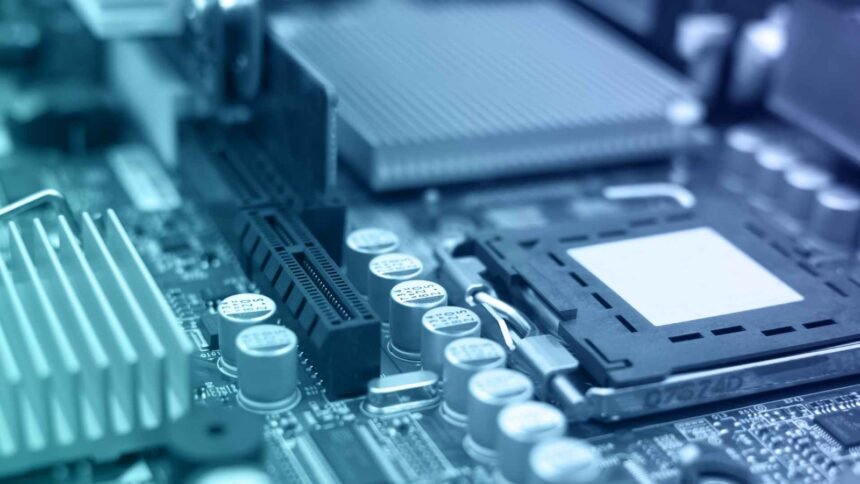As we step into 2025, the gaming industry is on the cusp of a transformative era, driven by groundbreaking advancements in gaming hardware. From powerful graphics processing units (GPUs) to innovative handheld devices and high-performance laptops, the landscape of gaming is evolving at an unprecedented pace.
The Dawn of New GPUs: Nvidia and AMD Lead the Charge
At the heart of next-gen gaming hardware are the advancements in GPUs, where Nvidia and AMD are setting new benchmarks. At CES 2025, Nvidia is expected to unveil its RTX 50-series GPUs, with the flagship RTX 5090 rumored to feature 32 GB of GDDR7 memory, a 512-bit bus, and a staggering 21,760 CUDA cores—33% more than its predecessor, the RTX 4090. These enhancements promise unparalleled ray tracing capabilities and AI-driven performance, delivering hyper-realistic visuals and smoother gameplay.
AMD is not far behind, with its RDNA 4 architecture powering the RX 8800 XT and other models. The RX 8800 XT is rumored to match the raster performance of Nvidia’s RTX 4080 Super while offering a 45% improvement in ray tracing over the RX 7900 XTX. AMD’s focus on AI integration, particularly with its FSR 4 technology, positions it as a strong competitor, offering gamers advanced upscaling and frame generation for better performance and visual quality.
These GPU advancements are not just about raw power; they represent a shift towards more efficient and intelligent hardware, leveraging AI to optimize rendering and reduce energy consumption. This is crucial for both desktop gaming and the growing demand for high-performance mobile gaming devices.
| GPU Model | Manufacturer | Key Features | Expected Launch |
| RTX 5090 | Nvidia | 32 GB GDDR7, 21,760 CUDA cores, AI-driven | CES 2025 |
| RX 8800 XT | AMD | Matches RTX 4080 Super, 45% better ray tracing | CES 2025 |
Handheld Gaming: The New Frontier
2025 is shaping up to be a pivotal year for handheld gaming devices, with major players like Lenovo and Microsoft making significant strides. Lenovo unveiled its Legion Go S at CES 2025, offering two variants: one running Windows and another powered by SteamOS, making it the world’s first officially licensed SteamOS handheld. These devices feature 8-inch displays with high refresh rates and are equipped with AMD’s latest Ryzen processors, catering to both casual and hardcore gamers.
Microsoft is also entering the handheld market with its Xbox-branded gaming handheld, codenamed “Kennan,” set to launch later in 2025. This device will run full Windows, integrate seamlessly with the Microsoft Store and PC Game Pass, and feature an official Xbox guide button, blending the portability of a handheld with the versatility of a Windows PC. This move signals Microsoft’s ambition to expand its gaming ecosystem beyond traditional consoles, as detailed in Windows Central.
The rise of handhelds reflects a broader trend towards portable gaming, driven by advancements in display technology, processing power, and battery efficiency. These devices are not just consoles but full-fledged gaming PCs in your pocket, offering unprecedented flexibility for gamers on the go.
| Handheld Device | Manufacturer | Key Features | Availability |
| Legion Go S (Windows) | Lenovo | 8” WUXGA 120Hz, AMD Ryzen Z1 Extreme | Jan 2025 |
| Legion Go S (SteamOS) | Lenovo | First SteamOS handheld, 8” display | May 2025 |
| Xbox Handheld (Kennan) | Microsoft | Full Windows, Xbox integration | Late 2025 |
Gaming Laptops: Power Meets Portability
Gaming laptops are also undergoing a renaissance in 2025, with manufacturers like Lenovo, Asus, and Alienware introducing models that combine cutting-edge performance with sleek, portable designs. Lenovo’s Legion Pro series, for example, includes laptops with up to Intel Core Ultra 9 processors and Nvidia RTX 50-series GPUs, paired with stunning 16-inch OLED displays boasting refresh rates up to 240Hz. These laptops are designed to be thinner and lighter, appealing to gamers who demand both performance and mobility.
Other manufacturers are following suit, with Asus and Alienware showcasing laptops that leverage AMD’s Ryzen AI 300-series processors and Intel’s Core Ultra 200-series, alongside high-refresh-rate OLED displays. The focus on portability and performance underscores the growing demand for devices that can handle demanding games without sacrificing convenience.
Desktops and Beyond: High-End Power for Stationary Gamers
For gamers who prefer stationary setups, Lenovo’s Legion Tower 7i and 5i desktops offer unparalleled performance. These towers are equipped with the latest Intel and AMD processors, alongside high-end GPUs like the Nvidia RTX 4080 Super, providing a robust platform for demanding games and applications. Additionally, Lenovo’s Legion Tab, powered by Qualcomm’s Snapdragon 8 Gen 3, offers a versatile tablet option for gamers seeking a hybrid experience.
Market Trends: The Rise of Handhelds and AI Integration
The gaming hardware market in 2025 is characterized by two key trends: the surge in handheld gaming devices and the integration of AI into hardware. Handhelds like Lenovo’s Legion Go S and Microsoft’s upcoming Xbox handheld are redefining portability, offering high-fidelity gaming experiences anywhere. This shift is driven by consumer demand for flexibility and the ability to game on the go without compromising performance.
AI integration is another game-changer. Technologies like Nvidia’s DLSS and AMD’s FSR are evolving, using AI to upscale graphics and generate frames, enabling higher visual fidelity and smoother gameplay with less strain on hardware.
Additionally, cloud gaming is playing a significant role, with services like Xbox Game Pass enabling seamless transitions between devices. Hybrid platforms that combine local and cloud-based gaming are becoming more prevalent, offering gamers greater flexibility and choice.
Challenges and Opportunities
While innovation is driving the industry forward, it also presents challenges. Supply chain constraints, particularly for advanced components like GDDR7 memory, could pose logistical hurdles for manufacturers. The intense competition among hardware makers, while fostering innovation, may also lead to market saturation and pricing pressures.
However, these challenges also create opportunities. The growing popularity of handhelds opens doors for companies to capture new market segments, especially in emerging economies where gaming is rapidly expanding. Leveraging AI and cloud technologies further enhances the potential for new gaming experiences, from hyper-realistic graphics to immersive virtual worlds.
Future Outlook: Beyond 2025
Looking ahead, the gaming hardware landscape is set to evolve further. Microsoft has already signaled its intention to release next-generation Xbox consoles in 2027, which are expected to be more integrated with Windows, potentially supporting third-party storefronts like Steam and continuing the tradition of backwards compatibility. This move could blur the lines between PC and console gaming, offering a more unified ecosystem for developers and gamers.
While specific details about Sony and Nintendo’s plans for 2025 are scarce, both companies are likely to respond to the shifting market dynamics. Sony, with its focus on high-end gaming experiences, may introduce new hardware or enhancements to its PlayStation ecosystem, while Nintendo could continue to innovate in the handheld and hybrid console space.
Beyond 2027, the industry may see even more immersive technologies like augmented reality (AR) and virtual reality (VR) becoming mainstream, further transforming how we play and experience games.






